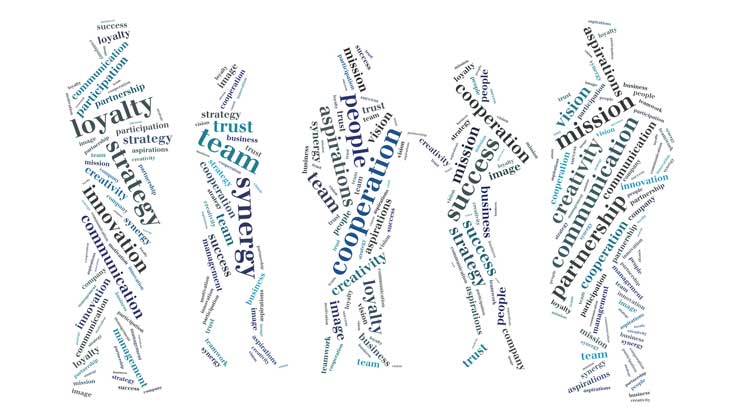
The proverbial table at which the Department of Homeland Security (DHS) sits is one of unappetizing choices and ever-evolving challenges. Sen. Ron Johnson (R-Wis.) noted some stark realities last week at DHS secretary nominee Kristjen Nielsen’s confirmation hearing. One of them was the fact that DHS is a fusion of more than 20 diverse agencies composed of a quarter of a million people with a $66 billion budget.
Halfway through its second decade, DHS has a length and breadth nearly unrivaled among federal agencies. The enterprise includes not only hundreds of thousands of internal professionals, but also the independent contractors and innovators who provide much of the know-how and resources that make DHS tick.
The opportunities are there, but understanding DHS dynamics is important. Marc Pearl, president and CEO of the nonpartisan Homeland Security & Defense Business Council (HSDBC), pointed out to Homeland411 a particularly definitive fact from a recent HSDBC study:
“We found out that 51 percent of the federal contracting dollar—appropriated dollars—that are designated as ‘homeland security’ spend are in federal agencies outside of the Department of Homeland Security,” he said. “So, the evolution not only has to recognize a maturing agency, but how do all the entities that comprise the enterprise interact, interoperate, collaborate, and cooperate with one another?”
HSDBC was created in 2004 to help just that.
“The desire … was to develop a nonpartisan reputation for providing high-level thought leadership for the Homeland Security enterprise on a par with the likes of a Business Executives for National Security,” Pearl said. “We wanted to cultivate a different kind of relationship with this new agency, and as a result, the founders of the council didn’t want to do things the way they had always been done.”
One of the biggest challenges for DHS at the time was that it began right in the middle of a conflict, with missions constantly changing and evolving. “The officials leading the agency were desirous themselves of establishing different, better, and more substantive relationships with their industry partners, particularly during a time when the money was flowing in, and the agenda was not yet completely determined,” Pearl said.
Although agencies such as the Department of Education and Environmental Protection Agency had stood up since, Pearl said nothing on the scope of DHS had been created since the Department of Defense. DHS responsibilities are remarkably broad, with components that range from Customs and Border Protection and Transportation Security Administration to the Federal Emergency Management Agency.
Tapping into the Enterprise
Understanding the realities and the vastness of DHS is a beginning, but where does an innovative entity wishing to do business and provide solutions begin to work with DHS?
“I don’t believe that there’s such a thing as a singular cohesive strategy for each of the segments,” said James Kim, president of Intelytx LLC. Kim is a federal acquisition strategist and analytics expert who helps companies better position themselves to do business with the government. He’s also a former Defense Department contracting officer, who has worked on both sides of the federal procurement process.
Whether companies want to initially penetrate the homeland security market or expand market shares within that space, Kim said clients typically want the same information: “What should our marketing or go-to-market strategy be in this specific sector, and given our service offerings, do we continue to grow our core service? Do we diversify? Do we prime? Do we sub?” he said.
Kim said one inescapable reality is the sheer size of DHS. And if a company is trying to spread across the entire enterprise and be everything to everyone, it typically doesn’t work well.
“Where I see the more successful strategies is where [companies decide], ‘Let’s break it up into smaller segments,” he said. “It’s really understanding the decision maker at the individual level and not even attempting to understand things at the enterprise or organizational level.” And within those segments, Kim added, the companies should align their service offerings with individual decision makers to be as “compelling as possible.”
If companies don’t understand that going in, Kim said it could pave the way for irrelevance. “[With] those approaches, I’ve seen companies either fail or end up spending a lot of money with limited return on investment,” he said.
Those aren’t the only variables. “Since DHS’ founding—this is understandable given that the age of the department is relatively young and perhaps one of the most politically charged missions among the federal departments—there was a lot of upsurge in spending as they started [to develop] their internal capabilities,” Kim said. “At first it was kind of very reactionary, almost wild, wild west.”
During this early growth period—and still today—the need to manage and understand these complexities is crucial. It’s also something with which the department continues to struggle.
In his recent annual report, DHS Inspector General John Roth said DHS needs some work.
“We have seen little evidence of proactive effort by leadership to view the organization holistically, to forcefully communicate the need for cooperation among components, and to establish programs or policies that ensure unity,” the report said. “[W]eak or nonexistent central authority hinders oversight, monitoring, and compliance.”
The report acknowledged, however, the difficulty for DHS leadership, particularly in times when DHS has been without permanent, Senate-confirmed leadership (as it is now). This void doesn’t give DHS the stability it needs to implement reforms, the report said.
Even in its relative infancy, DHS has already been through several iterations. Five permanent secretaries have come and gone, spanning three different presidential administrations, with Nielson on deck to become the sixth permanent secretary.
“It’s so young, and things haven’t calcified—which is a good and a bad thing,” Pearl said. “Obviously, you get different approaches to what that mission is going to be about and how you’re going to carry out that mission, all the while, not really having a sense yet of what the enterprise is about and how all the components fit together.”
© 2017 Homeland411